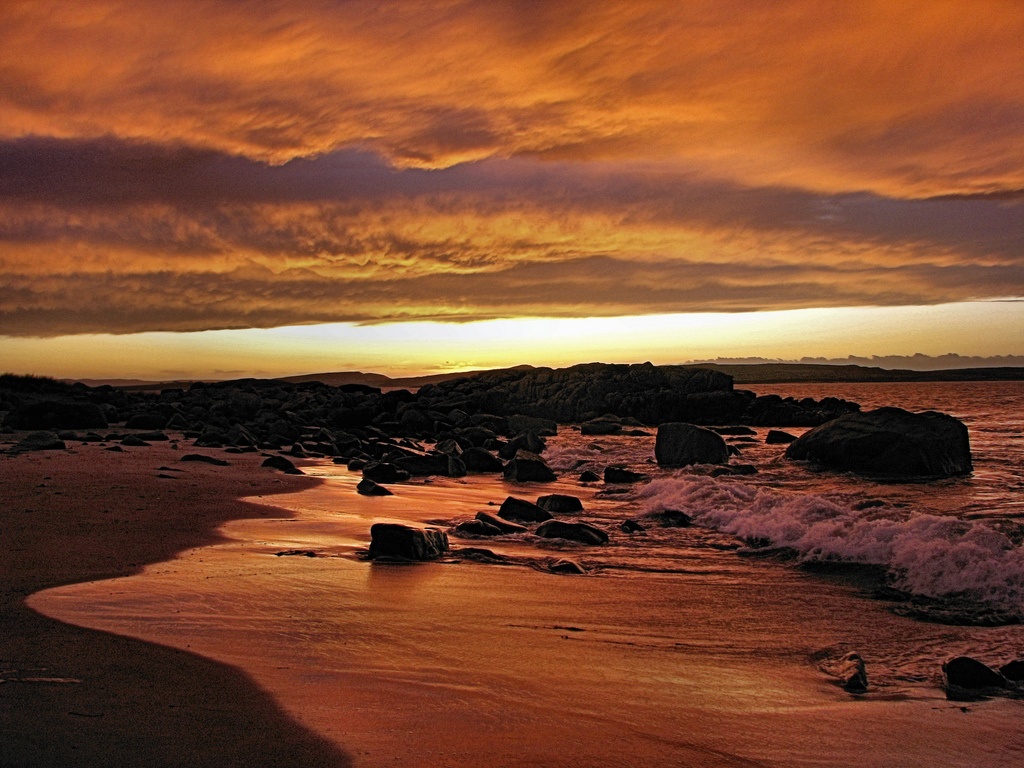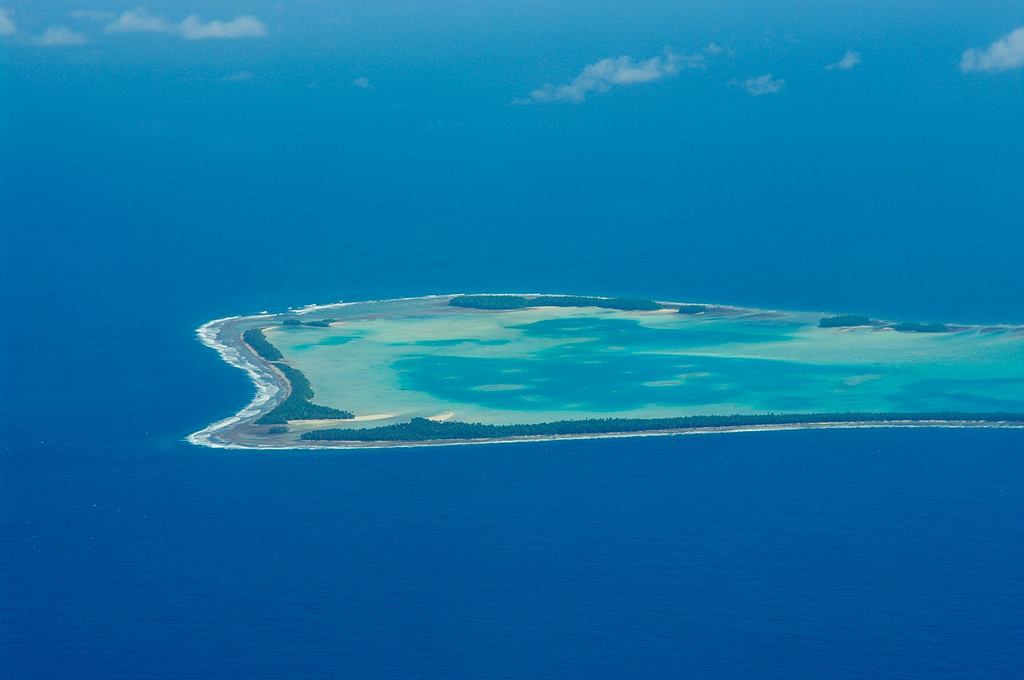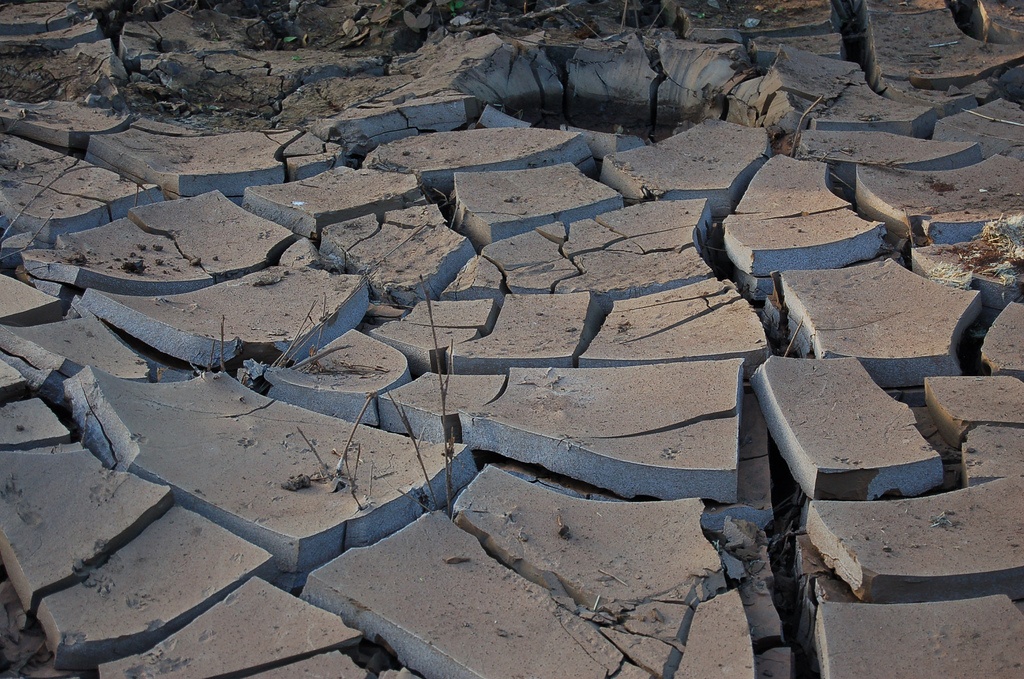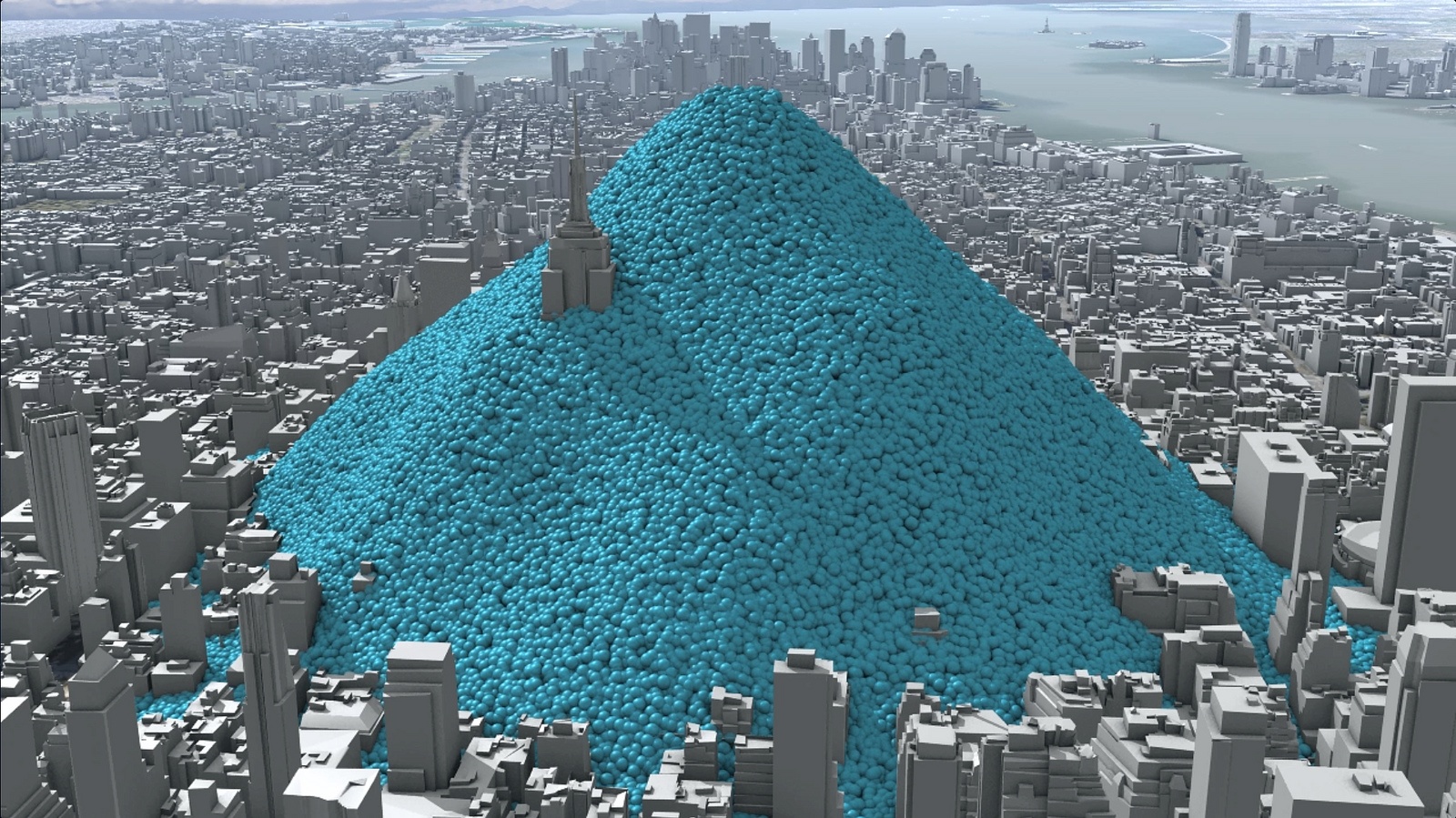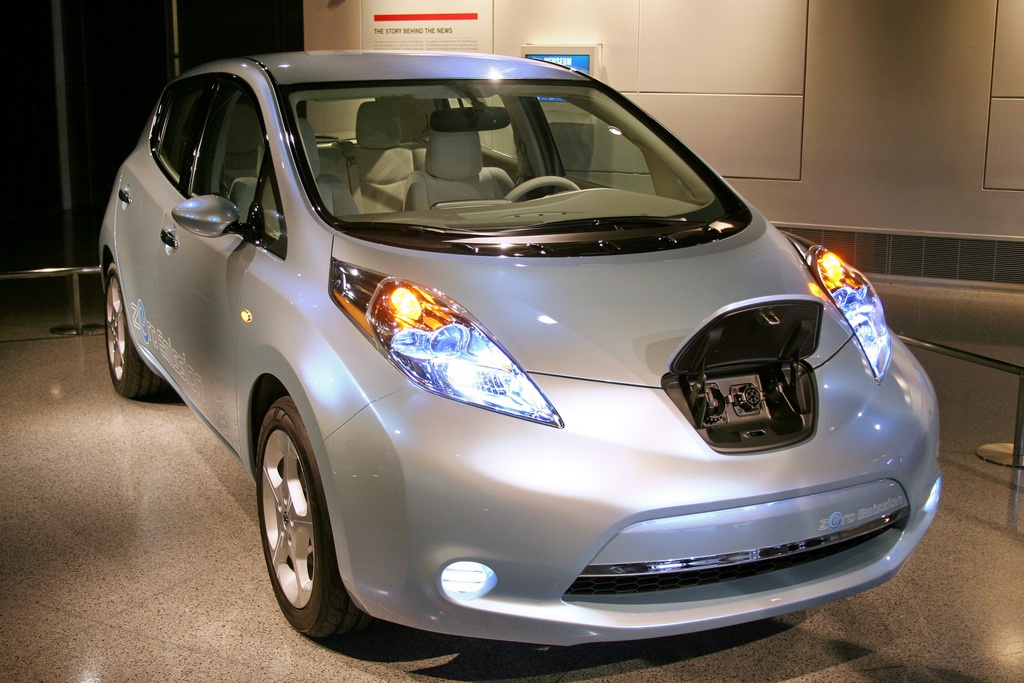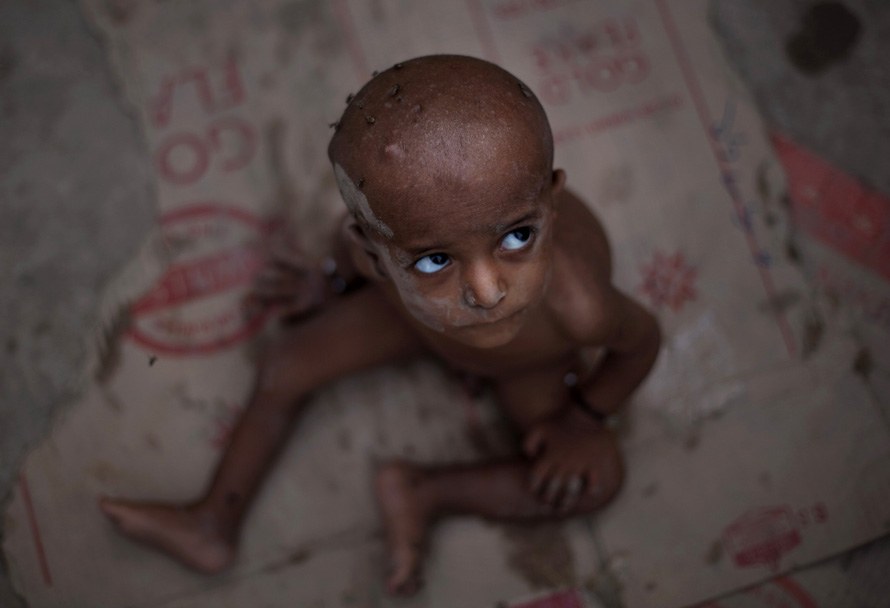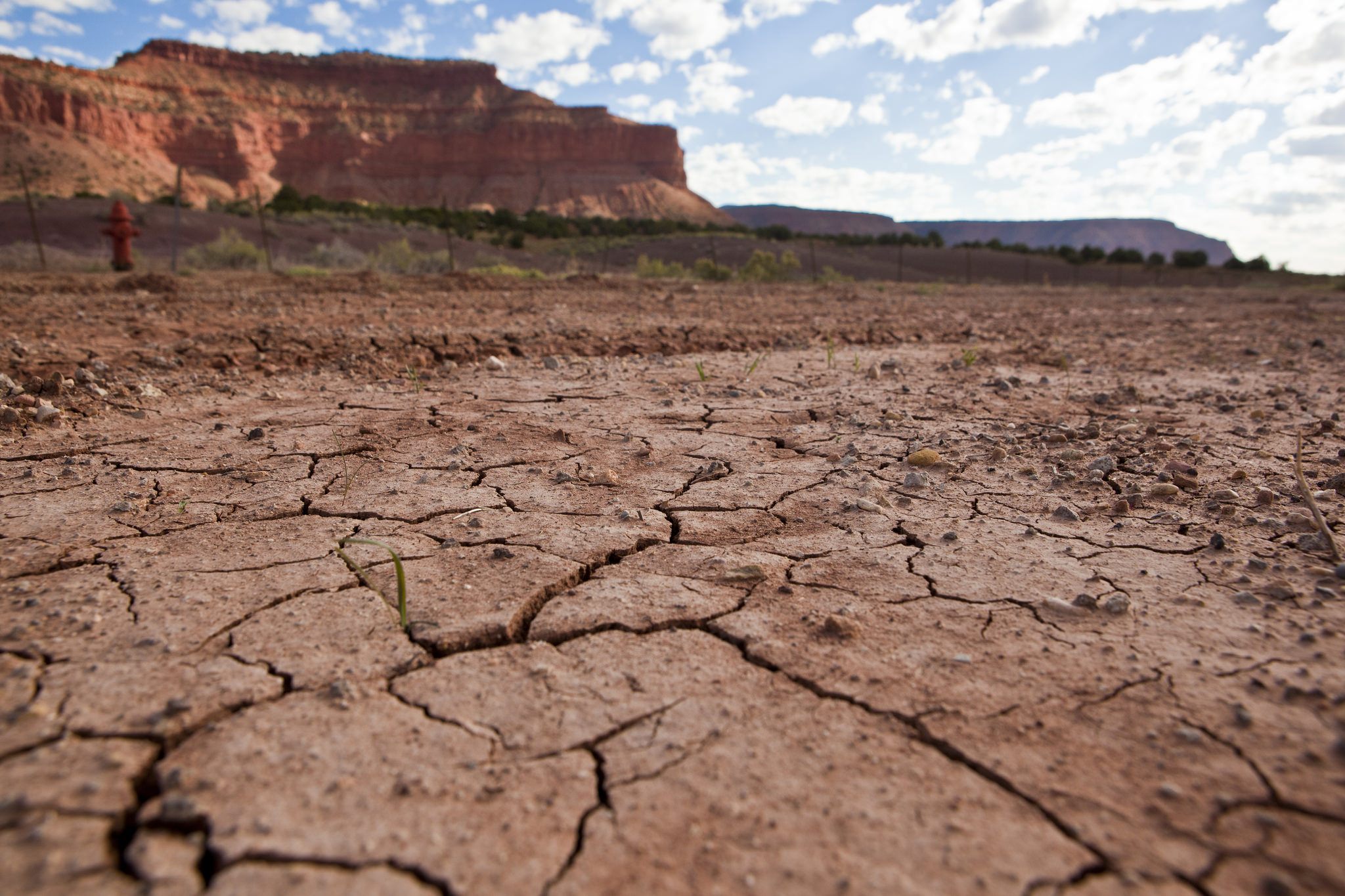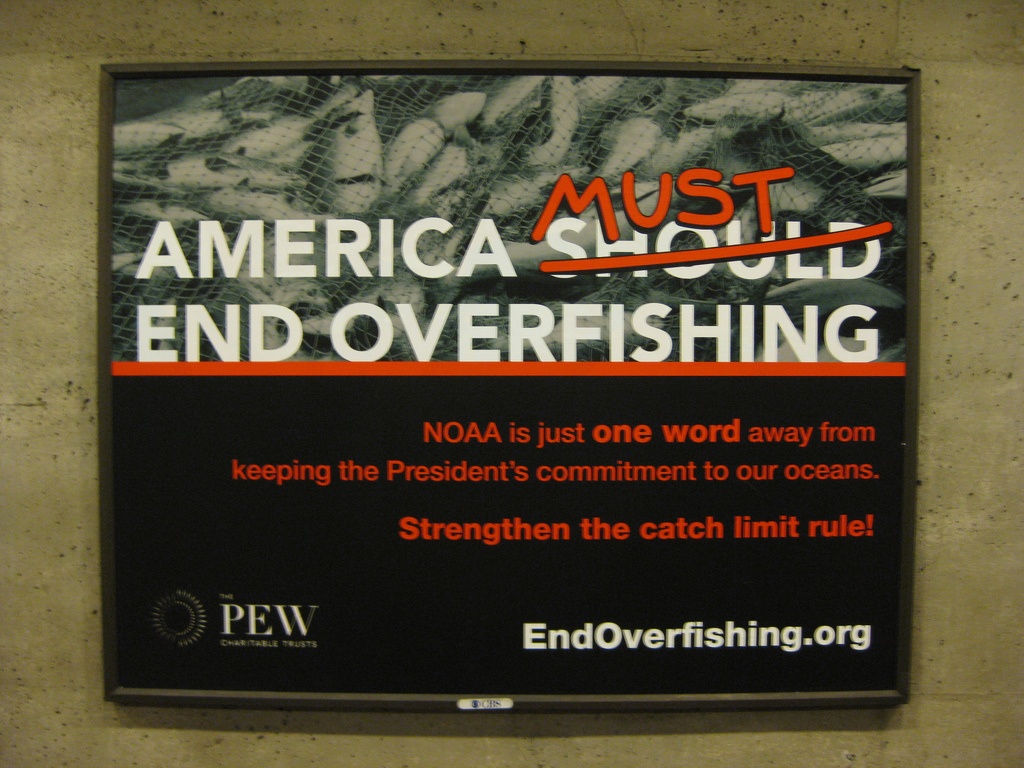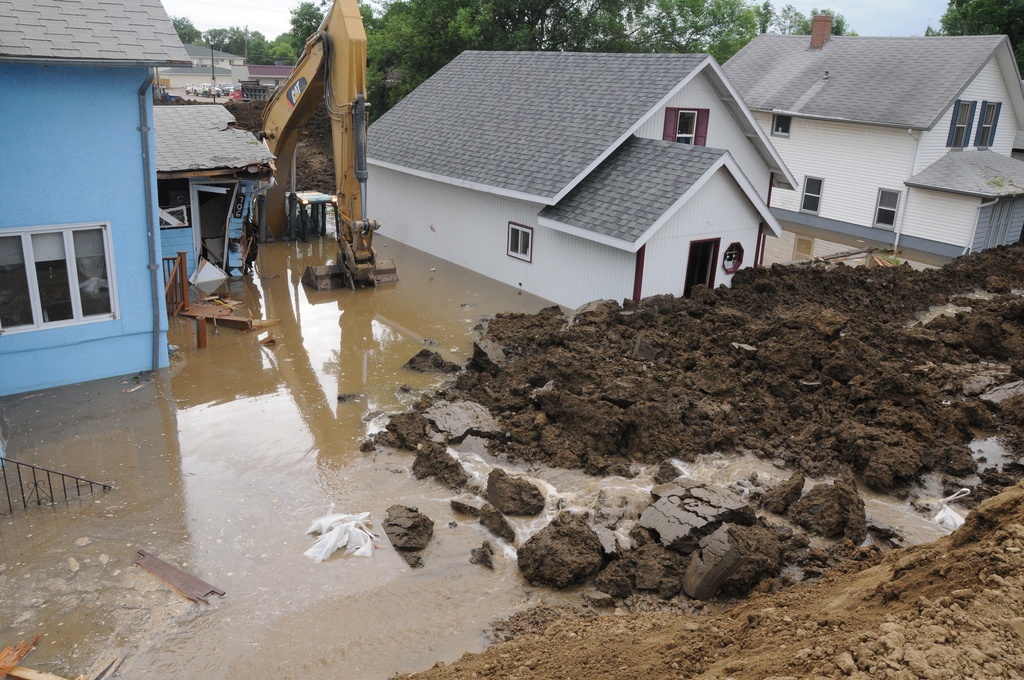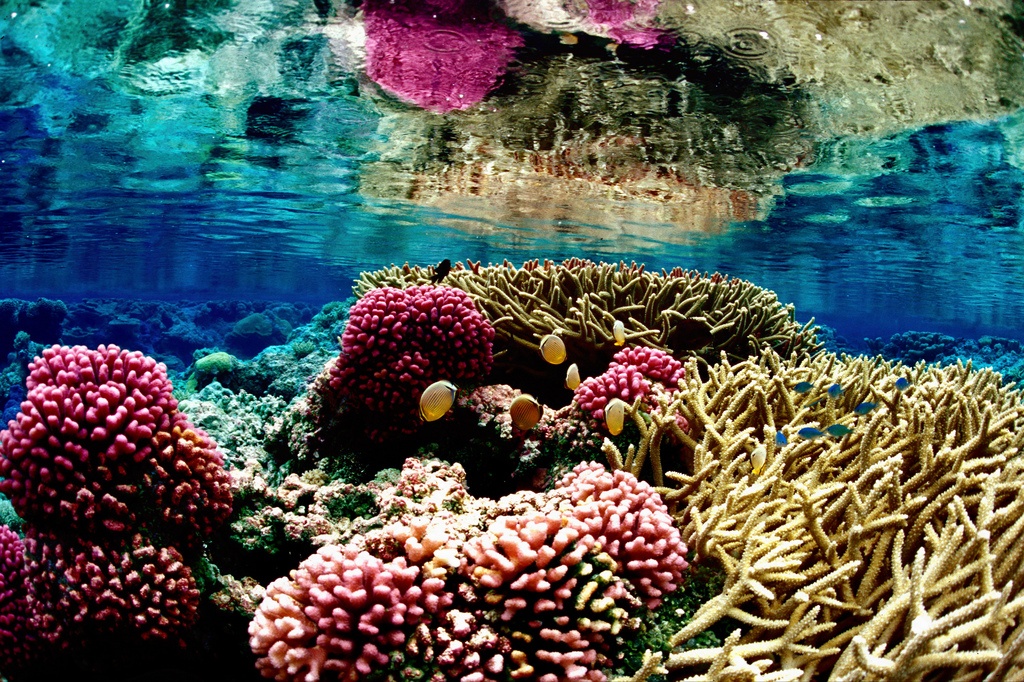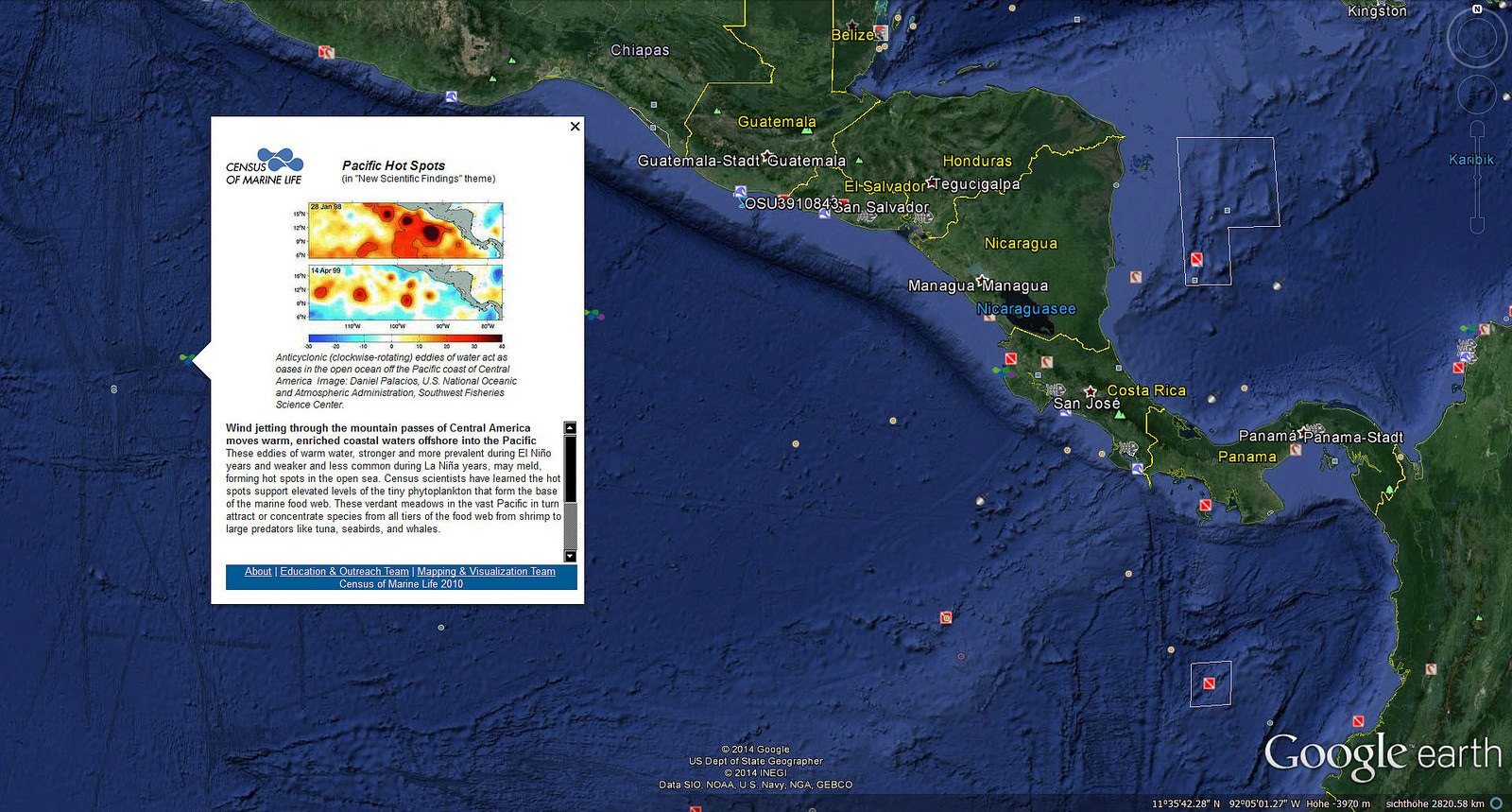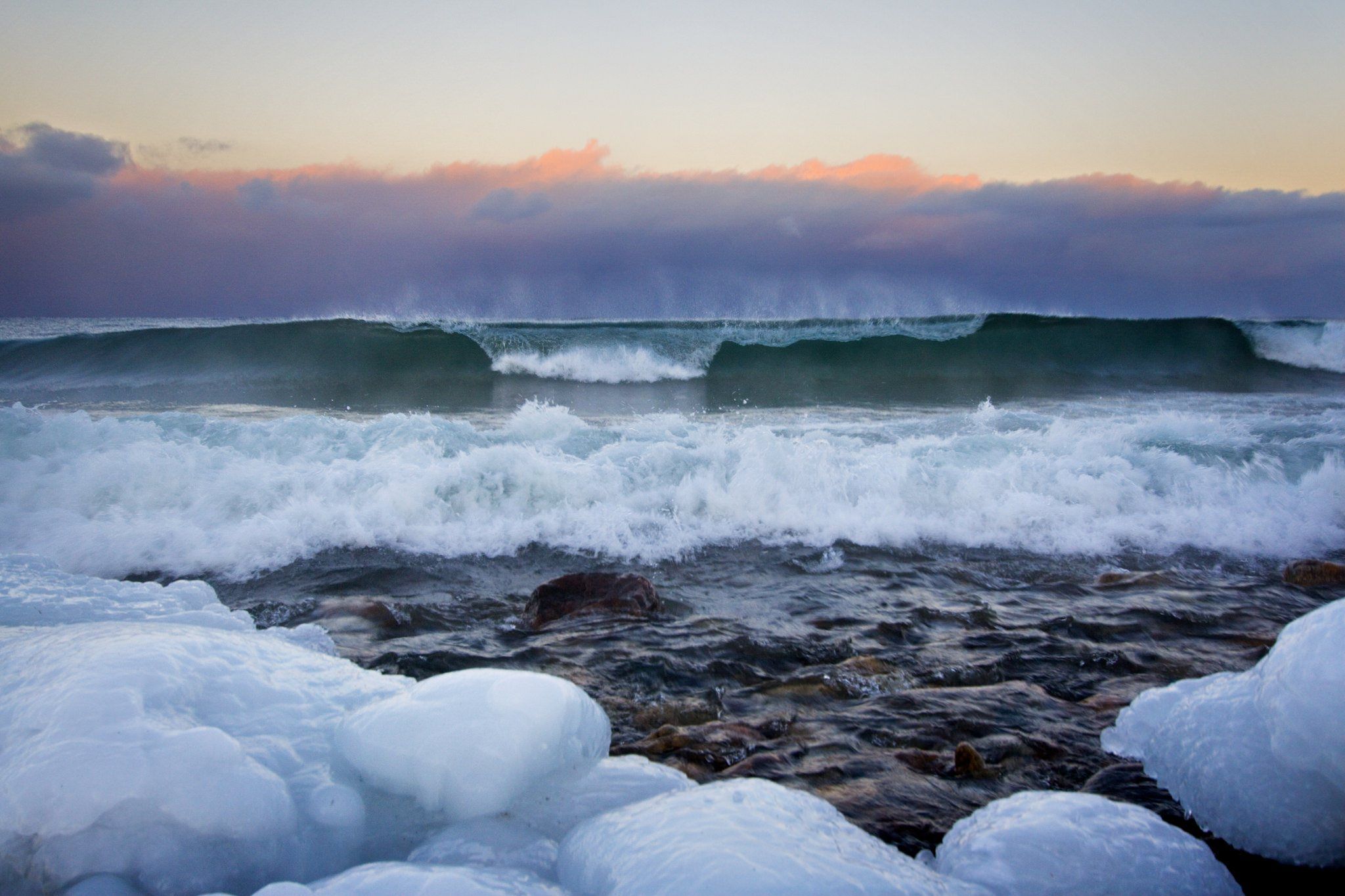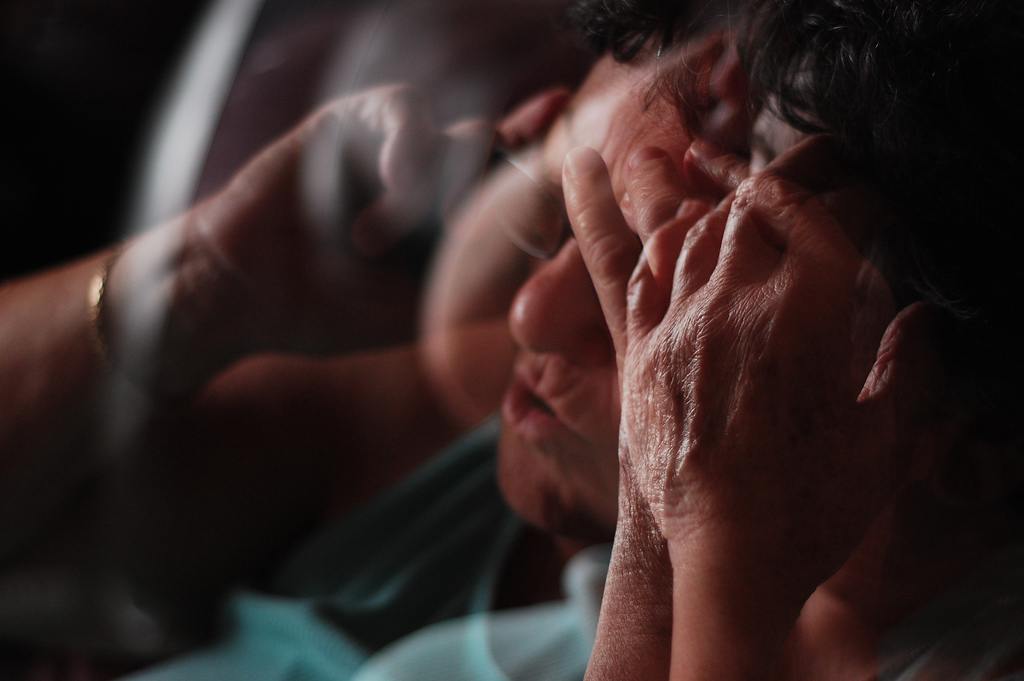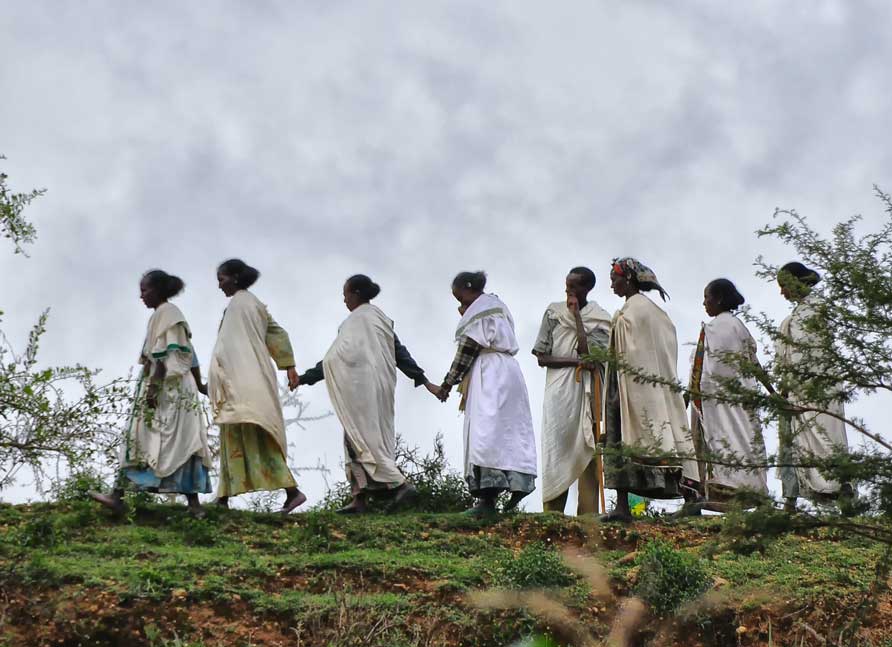You and I are burning too many fossil fuels. We are the only agents who can turn it around. That means using alternative energy sources. But if this does not convince you, take a look at the 30 photographs below which should make you sit up and take notice!
1. Arctic ice cap
This NASA photo shows that the ice cap is constantly getting smaller in size due to rising global temperatures. Experts predict that summer ice in the Arctic will be a memory in 20 years. Marine species that depend on the ice will just disappear.
2. Hard rain
Wetter regions will be subject to heavier and prolonged rainfall while dry regions will get dryer and dryer.
3. Tuvalu at risk
Rising seas threaten to wipe Tuvalu off the map. Sea levels are expected to rise by 23 inches in this century, compared to 6 inches in the 20th century.
4. Dry river bed
Rivers drying up will affect their biodiversity. This will have severe economic consequences where livelihoods depend on rivers.
5. Lake Hume, Australia
Drought has led to dramatic falls in water levels in Lake Hume
6. Hurricane Katrina
The National Geographic states that continuing rising temperatures will contribute to many more devastating hurricanes like Katrina. This one ended 1,800 lives and caused damage estimated at $125 billion.
7. New York carbon dioxide emissions
New York added 54 million metric tons of carbon dioxide to the atmosphere in 2010. That is 1.72 tons a second!
8. Wind Turbines, Bangui, North Phillipines
One way of reducing harmful greenhouse gases is to install wind turbines.
9. Zero emission vehicles
Nissan and Renault have produced this zero emission vehicle, which could be a model for the future.
10. Methane gasses released from permafrost
In Siberia, the permafrost is starting to melt and, as it does, it releases methane gas which is a major factor in global warming.
11. Forest fires
Forest fire seasons may become longer in the Rocky Mountains, the Great Plains, and elsewhere. There is a possibility that eight times more land may be destroyed by 2100.
12. Displaced persons
Ninety-eight percent of all displacement in 2012 was due to climate change. Hundreds of millions of people will be displaced by disastrous weather conditions and climate change by 2050.
13. Infectious diseases flourish with climate change
14. Water shortages
More and more people will be desperate for water as it becomes scarcer.
15. UNESCO world heritage sites at risk
Just one degree rise in global temperatures could have a disastrous impact on cities like St. Petersburg and Venice.
16. Food will run out
Supplies of wheat and maize are already slowing down and, as a result, becoming more expensive.
17. Pollution risks
California is a typical example of the risks of pollution. Pollution, smog and forest fires all add to very poor air quality, which is affecting citizens’ health. This photo shows smog over Los Angeles.
18. Decline of fish stocks
By the year 2060, there could be a decline of up to 50% of fish stocks if there is global warming of 2.8 degrees or more. This is not counting the reduction caused by overfishing.
19. Animals will get smaller
Studies show that animals, such as polar bears, are now smaller as a result of more carbon dioxide in the air.
20. Heat waves will increase mortality
Prolonged heat waves are set to become more frequent. The 2003 heat wave in Europe is known to have caused 70,000 deaths.
21. Flooding and property damage
An EU report states that 2,500 people drowned in flooding in Europe in the period 1980 -2011. Property damage runs into millions of dollars.
22. Coral reefs at risk
The reefs are very sensitive to any change in the seawater temperature. Another drastic change is that the seawater is becoming much more acidic due to so much carbon dioxide dissolving into the oceans.
23. Major currents are subject to changes
Major currents, such as the El Nino Southern Oscillation (ENSO) and the North Atlantic Oscillation (NAO), are subject to unexpected changes and can cause havoc with climate patterns.
24. Lakes are warming up
One NASA study shows that large lakes worldwide could warm up by as much as 1 degree Celsius (1.8 degrees Fahrenheit) over the next 10 years. The effects on the ecosystems and the growth of some algal blooms, which may be toxic to some fish, is causing concern. Lake Baikal in Siberia is probably the largest lake in the world. It has seen some dramatic changes which are affecting the 2,500 species living there.
25. Butterflies are at risk
The butterfly is one of the most sensitive species to climate change, pollution and changes within ecosystems. If the temperatures are too warm, they cannot survive. One report shows that Europe will lose much of its biodiversity and this is alarming because it has an impact on pollination and crop production.
26. Food chain is affected
Inevitably, as changes in climate and the ecosystems take hold, there are knock on effects on the food chain. Toxins, chemical contaminants and use of pesticides are putting the food chain at risk.
27. Chronic stress
Large swathes of populations at risk of flooding, loss of housing and livelihood will lead to chronic stress syndrome as people struggle to survive. The NIH has issued a document stressing the effects on health in general.
28. Populations at risk
More than half the world’s people live 60 kilometers from the sea. With rising sea levels, this will cause major social and economic crises in many countries where the infrastructure is inadequate.
29. Increased mortality
The WHO estimates that climate change will be responsible for early and tragic death of over 250,000 people over the next 20 years.
30. What will be left?
If each and every one of us takes action, then we can avoid the above desolate scene which could haunt our children and grandchildren. Save energy, eat sensibly and campaign to get polluters to pay a carbon tax. Think about video-conferencing instead of polluting the skies with unnecessary travel, and buy a compost maker, if you can. These are just a few ways that we can implement now to prevent disaster. Featured photo credit: Climate Emergency /Takver via flickr.com

